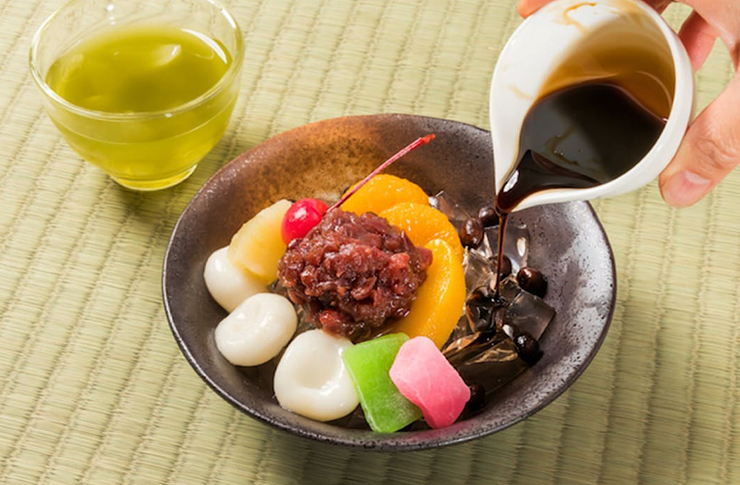
Anmitsu is a traditional Japanese dessert that dates back to the Meiji period in the late 19th century. It is a refreshing and colorful dish, typically enjoyed during the warmer months. The dessert consists of small cubes of agar-agar, a jelly-like substance made from red algae, which are translucent and slightly firm to the bite.
The name “anmitsu” comes from two key ingredients: “an,” which refers to sweet red bean paste (anko), and “mitsu,” meaning syrup. The syrup, usually a dark brown sugar syrup called kuromitsu, is poured over the agar cubes, adding a rich sweetness.
Anmitsu is often served with a variety of toppings that provide different textures and flavors. Common additions include pieces of fresh fruit like mandarin oranges, cherries, or peaches, small mochi (rice cakes), and gyuhi, a soft type of mochi. Some versions also include a scoop of ice cream or shiratama, which are chewy rice flour dumplings.
The taste of anmitsu is a delightful balance of flavors and textures. The agar cubes are subtly flavored, allowing the sweetness of the red bean paste and syrup to shine. The fresh fruits add a juicy and slightly tangy contrast, while the mochi offers a chewy element. Anmitsu is relatively low in calories compared to many other desserts, making it a reasonable option for those mindful of their diet. The agar-agar base, which is made from seaweed, is virtually calorie-free and provides a good source of fiber. The other components, such as fresh fruits and small amounts of sweet red bean paste (anko), contribute some calories, but in moderation.
Anmitsu has a nostalgic appeal in Japan and is often associated with traditional Japanese tea houses. It remains a popular dessert, enjoyed for its light, refreshing qualities and the way it combines traditional Japanese ingredients in a harmonious blend. Despite its long history, anmitsu continues to be a beloved treat, enjoyed by people of all ages.
The post Anmitsu appeared first on The Fashiongton Post.
